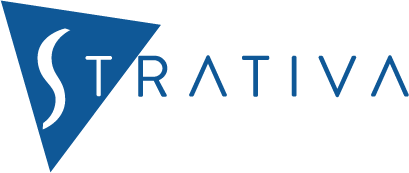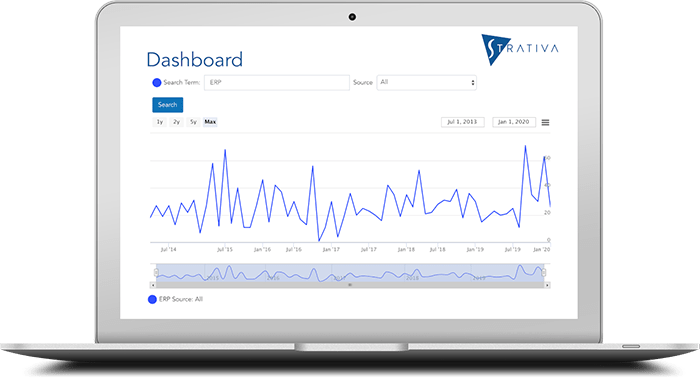Microsoft Business Solutions has many necessary elements in place with its Dynamics product line to continue its move into large enterprises, but it still needs to fill functional gaps in its product offerings.
In our January blog post, Four Trends Drive Microsoft Dynamics Up Market, we cited several case studies where MBS had penetrated enterprise accounts. At the Microsoft Dynamics annual user conference, Convergence, in New Orleans this month, customers and executives provided further evidence that the product line is continuing to make progress in its effort to appeal to large users.
In recent years, Microsoft has had several implementations of its Dynamics AX and Dynamics CRM systems in large enterprises. These include Carrefour S.A, the world’s second largest retailer, Nissan Motor Company, Shell Retail, and others. Now, at its Convergence conference, Microsoft highlighted two more large company success stories:
- Dell Computer is the world’s third largest PC manufacturer as well as a leading provider of a variety of IT products and services, with revenues of $57 billion. Dell is in process of consolidating its manufacturing ERP systems onto Microsoft Dynamics AX, with Oracle E-Business Suite continuing to run in headquarters and for certain corporate shared services.
- Revlon is the well-known cosmetics company with worldwide revenues of nearly $1.5 billion. Revlon consolidated 21 ERP systems to a single instance of Microsoft Dynamics AX.
Another key success factor for the large enterprise market is the ability to provide direct support. In this regard, Microsoft’s reliance on its partner channel is often not sufficient for large companies. To address this need, Microsoft has been building up its Microsoft Services unit, which provides consulting and premier support not only for its Dynamics business applications but also for Microsoft’s entire portfolio of offerings. The Microsoft Consulting Services (MCS) Dynamics unit has reportedly doubled its headcount over the past year, and it can provide everything from high level program and partner management services to hardware support in conjunction with its large OEM partners, such as IBM and HP. For large customers, Microsoft can even take responsibility for service levels of the deployed applications.
Three Major Functional Gaps
These case studies, along with Microsoft’s direct services capabilities, indicate that Microsoft has had some success in the large enterprise market. But are these exceptions, or are Microsoft’s offerings mature enough to routinely take business away from the Tier I ERP and CRM players?
The answer is, not yet. Microsoft as an organization has the global presence and the resources to do so, but the Dynamics business applications at present lack functionality in three critical areas. Until these are filled, Microsoft will be limited in the number of deals where it can be short listed against Oracle and SAP.
- Human Capital Management (HCM). Microsoft Dynamics AX today does have some HCM functionality for core HR, talent management, benefits administration, and employee/manager self-service. In addition, it does provide payroll for US and Russia. However, those who have studied this functionality do not view Microsoft’s HCM offerings as competitive with SAP, Oracle, Workday, or other first tier HCM providers. In the SMB market, Microsoft could get away with these deficiencies, as many prospects either do not include HCM in their acquisition plans or are satisfied to work with a Dynamics partner for any gaps in functionality. In the large enterprise space, however, this is often not an acceptable strategy. This is especially true when the Microsoft partners for HCM are only regional players.
- Customer Service. The Dynamics team prides itself on the success of its Dynamics CRM offering, built from scratch to be a serious competitor to Salesforce.com, SAP, and Oracle. However, Dynamics CRM is not a full CRM offering. Its functionality is limited largely to sales force automation and now marketing automation (thanks to the 2012 acquisition of Marketing Pilot). Dynamics CRM lacks a full set of functionality for customer service and field service. So, when prospects are looking for a solution that gives them a 360-degree view of the customer—both new customers and existing customers, for both sales and for after-sales services—they quickly scratch Microsoft from their short lists. If they really want to go with Microsoft, they look to Microsoft partners to provide the needed functionality. Again, this approach may work for Microsoft’s traditional SMB market—although even there, the lack of a customer service module is still a limitation. But in large global enterprise deals with thousands of users, most prospects take a quick look at Microsoft and move on to more robust providers.,
- Supply Chain Management (SCM). Microsoft Dynamics AX today only offers traditional material planning functionality, so-called MRP and MRP-II systems. There are no supply chain execution modules for warehouse management, transportation management, or logistics. Neither is there supply chain planning functionality for demand forecasting, sales and operations planning, constraint-based scheduling, supply chain optimization, or event management. Again, in the SMB market, many prospects are doing well if they can implement basic MRP, and those who need more are often happy to consider partner solutions. But in the large enterprise space, prospects often expect this functionality to be part of the core offering.
Partner solutions work best when they address narrow industry needs—for example, law firm practice management from Lexis Nexus, or complex manufacturing functionality from Cincom. But for broad horizontal systems, such as HCM, customer service, and supply chain management, prospects expect the ERP or CRM system to be able to provide that functionality directly. Partner solutions at this point are simply a band aid.
The good news is that Microsoft recognizes these deficiencies and intends to deal with them over the course of the next few years, although, for the most part, it is not giving out details publicly. The one area where Microsoft has indicated specific plans is in the supply chain area. Later this year, it intends to announce new capabilities for Dynamics AX for warehouse and transportation management, along with demand management. This is a good start. In the other two areas—HRMS and customer service—Microsoft executives only indicate that they realize these needs and intend to address them in future releases of Dynamics AX and Dynamics CRM.
Gaps Not Necessarily a Hard Barrier
The large company case studies illustrate that Microsoft Dynamics has an expanding presence in the large enterprise market. Nevertheless, it would be unusual to see Dynamics fully replace Oracle or SAP for customers in this space. That said, Microsoft still can be successful in the large enterprise space, if prospects see SAP and Oracle playing a restricted role: pushing them back into a corral to serve only their core financials and perhaps core HRMS needs. Outside of this corral, Microsoft Dynamics can then become the operational system platform for such organizations.
If this is the case, the lack of HR functionality does not need to be an immediate impediment for further Microsoft progress up-market. Barring some major acquisition by Microsoft, it is unlikely that Microsoft Dynamics will have the richness of HCM functionality needed to displace SAP or Oracle in the HCM space. Any future Microsoft development in HCM will be more appealing to midsize organizations than to the large enterprise market.
Likewise, Microsoft’s lack of supply chain functionality does not need to be a major impediment. Manufacturing, distribution, and retail prospects will still need to fill their SCM requirements with a third-party solution. Fortunately, there are good offerings from Microsoft partners for warehouse management and transportation management. Furthermore, even many SAP and Oracle customers look to best of breed solutions, such as E2Open and Kinaxis, for supply chain planning systems. So, the lack of Microsoft SCM offerings does not need to be a show stopper.
The weakness of Microsoft’s customer service and field service features in the CRM product, however, is more problematic. When looking at CRM, most large enterprises want more than salesforce automation. Microsoft’s acquisition of Marketing Pilot for marketing automation fills one gap. A similar acquisition or internal development of after-sales service functionality is probably the most urgent need if Microsoft is to further succeed in the large enterprise market.
Battle in the Big Leagues
What could go wrong with Microsoft’s up-market ambitions? First, SAP and Oracle are not going to let themselves be passively corralled within corporate headquarters. Both vendors have major programs to further develop and serve line of business system requirements: SAP with its acquisitions of SuccessFactors, Ariba, and its line of business cloud applications; Oracle with its Fusion Applications.
Second, there are other providers that have the same up-market ambitions as Microsoft. For example, Infor, which is headed up by former Oracle co-President Charles Phillips, fully intends to be a credible alternative to SAP and Oracle, and it already has a much broader footprint of applications than Microsoft has. Likewise, Workday from the very beginning took aim at the large enterprise market for HCM, financials, and operations management for services firms, and it is already a major thorn-in-the side of SAP and Oracle.
Microsoft’s success in the large enterprise space, therefore, is not guaranteed. But its success so far is encouraging, and if it continues to fill out its functional footprint, it will become a strong contender.

